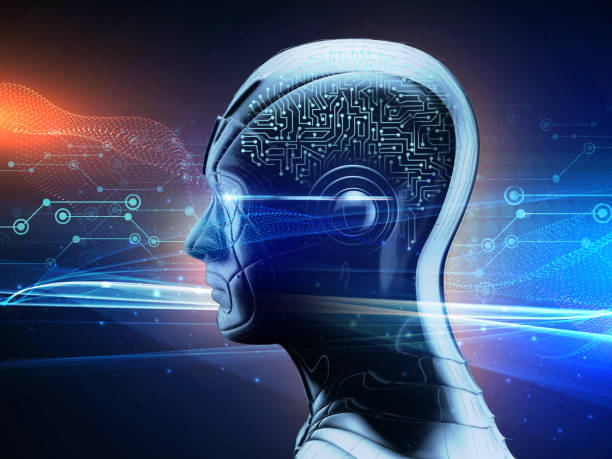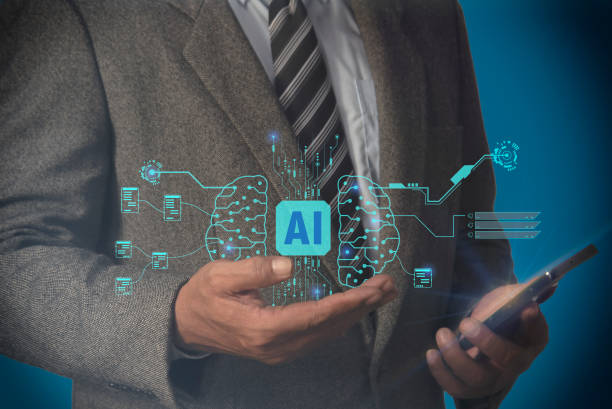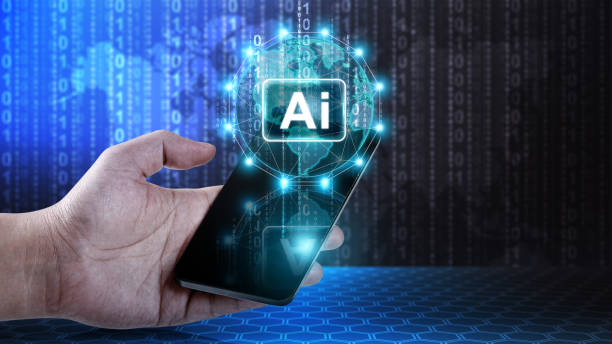What is an AI Robot? Definition and Key Concepts
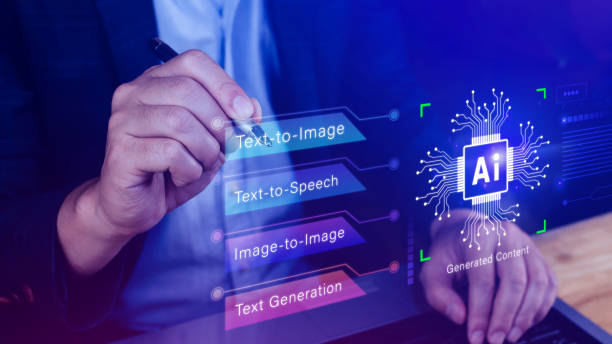
What is an AI Robot?
An AI robot (Artificial Intelligence Robot) is a combination of two key concepts: Artificial Intelligence (AI) and robotics.
Simply put, an AI robot is a physical or virtual machine that, using artificial intelligence algorithms, is capable of performing tasks that typically require human intelligence.
These tasks include learning, problem-solving, decision-making, natural language understanding, and pattern recognition.
Artificial intelligence enables the robot to interact with its environment, process information, and make informed decisions based on it.
The main difference between a regular robot and an AI robot is that an AI robot has the ability to adapt to new situations and learn from its experiences.
In other words, an AI robot is not only programmed to perform specific tasks but can also adjust its behavior and automatically improve as conditions change.
AI robots can exist in various forms, from industrial robots used in factory production lines to chatbot software that answers customer questions.
Furthermore, AI robots have extensive applications in medical, educational, and service fields.
With technological advancements, AI robots are expected to play a more significant role in our daily lives and contribute to improving the quality of life.
In fact, an AI robot is a complex system composed of a combination of hardware and software.
The robot’s hardware includes sensors, motors, and other physical components that allow the robot to interact with its environment.
The robot’s software includes AI algorithms, control systems, and other programs that enable the robot to process information, make decisions, and perform its tasks.
Ultimately, an AI robot represents humanity’s endeavor to create machines that can think and act like humans.
Is your e-commerce website ready to attract maximum customers and increase sales? RasaWeb transforms your online business by designing modern and efficient e-commerce websites.
✅ Increased speed and improved SEO
✅ Excellent user experience on mobile and desktop⚡ Get a free e-commerce website design consultation from RasaWeb!
Diverse Applications of AI Robots in Various Industries

Diverse Applications of AI Robots
AI robots have widespread applications in various industries and help improve efficiency, reduce costs, and increase safety.
In the manufacturing industry, AI robots can be used in production lines to perform repetitive and dangerous tasks.
These robots can assemble parts with high precision, inspect product quality, and automatically move materials.
In the healthcare industry, AI robots can assist doctors in complex surgeries, dispense medications, and provide patient care.
Furthermore, in the service industry, AI robots can act as chatbots to answer customer questions, process orders, and provide support services.
In the agricultural industry, AI robots can assist farmers in planting, tending, and harvesting crops.
These robots can analyze soil, accurately distribute fertilizers and pesticides, and automatically harvest crops.
In the transportation industry, AI robots can be employed in self-driving cars, traffic management, and goods delivery.
AI robots even play a significant role in space exploration, assisting astronauts in collecting data, conducting experiments, and building space stations.
AI robots have gradually become vital tools in various industries and are expected to play a more prominent role in the development and advancement of these industries in the future.
Given recent advancements in AI and robotics, it can be predicted that the applications of AI robots will significantly increase in the future, and these robots will be employed in even newer domains.
Advantages and Disadvantages of Using AI Robots
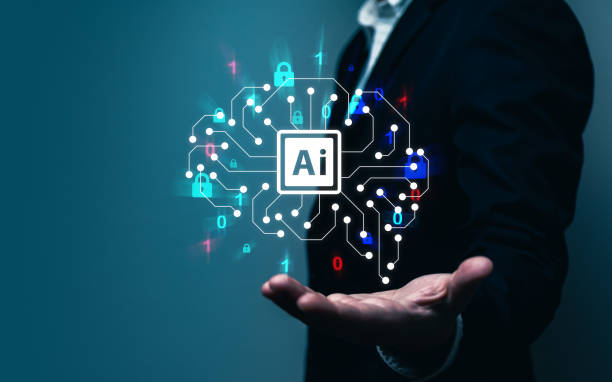
Advantages and Disadvantages of AI Robots
The use of AI robots offers many advantages, including increased efficiency, reduced costs, and enhanced safety.
AI robots can perform repetitive and dangerous tasks without fatigue or error, leading to increased productivity and reduced accidents.
Furthermore, AI robots can operate continuously without needing rest, which results in increased production and reduced manufacturing time.
AI robots can process data with high speed and accuracy, leading to improved decision-making and reduced human errors.
However, the use of AI robots also has disadvantages, including high implementation and maintenance costs, the need for technical expertise for programming and repair, and ethical and social concerns related to the displacement of human labor.
One of the biggest challenges associated with AI robots is their impact on the job market.
With the increased use of robots, many jobs previously performed by humans are being automated, which can lead to increased unemployment and social inequality.
Moreover, there are concerns regarding privacy and data security, as AI robots can collect and process individuals’ personal information.
Ultimately, it must be noted that AI robots are tools that can be used for good or bad purposes, and therefore, appropriate laws and regulations must be established to control their use.
AI robots require careful scrutiny and oversight to prevent their misuse.
| Advantages | Disadvantages |
|---|---|
| Increased Efficiency | High Implementation Cost |
| Reduced Costs | Need for Technical Expertise |
| Enhanced Safety | Ethical Concerns |
Technical and Ethical Challenges in AI Robot Development
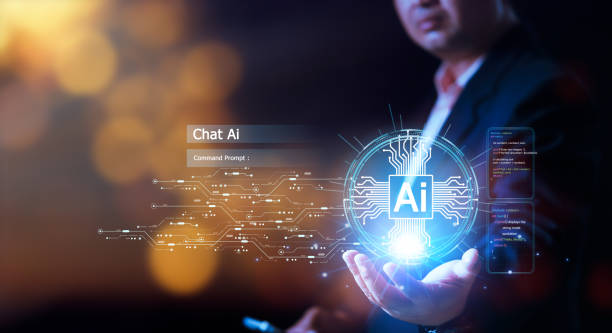
Technical and Ethical Challenges of AI Robots
The development of AI robots faces numerous technical and ethical challenges.
Technical challenges include the need for complex and precise algorithms, the need for large and high-quality data, and the need for powerful and efficient hardware.
AI algorithms must be able to adapt to different conditions and make correct decisions.
The data used to train these algorithms must be diverse and error-free to prevent errors and biases.
The robots’ hardware must also be capable of executing complex algorithms with high speed and accuracy.
Ethical challenges include robot accountability, protecting individuals’ privacy, and the impact of robots on the job market.
It must be determined who will be responsible in case of an error or accident caused by a robot.
Furthermore, the unauthorized collection and use of individuals’ personal information by robots must be prevented.
Ultimately, it should be noted that robots should not replace human labor but rather be used as tools to assist humans and improve the quality of life.
AI robots should serve humanity, not the other way around.
The development of AI robots requires a responsible and conscious approach that considers all technical, ethical, and social aspects.
Is your e-commerce website ready to attract maximum customers and increase sales? RasaWeb transforms your online business by designing modern and efficient e-commerce websites.
✅ Increased speed and improved SEO
✅ Excellent user experience on mobile and desktop⚡ Get a free e-commerce website design consultation from RasaWeb!
The Future of AI Robots and Their Impact on Human Life

The Future of AI Robots
The future of AI robots is very bright and promising.
With technological advancements, AI robots are expected to play a more significant role in our daily lives and contribute to improving the quality of life.
AI robots can assist humans in various fields such as healthcare, education, transportation, and services.
For example, AI robots can assist doctors in complex surgeries, provide personalized education to students, drive autonomous vehicles, and help the elderly with daily tasks.
AI robots can help us perform difficult and dangerous tasks, optimize our time, and enjoy life more.
However, it must be noted that the development of AI robots requires a responsible and conscious approach that considers all technical, ethical, and social aspects.
AI robots should serve humanity, not the other way around.
With the increasing capabilities of AI robots, they can increasingly integrate into our lives and assist us with various tasks.
AI robots can help us live better lives at home, at work, and in society.
AI robots can help us face new challenges and achieve our goals.
However, it must be noted that AI robots should not replace humans but rather be used as tools to assist humans and improve the quality of life.
AI robots should serve humanity, not the other way around.
AI robots, with all their potential, require precise management and control to be effectively and safely integrated into our lives.
Types of AI Robots and Their Characteristics

Types of AI Robots
AI robots can be categorized based on various criteria, including the type of tasks they perform, their level of intelligence, and the type of hardware they use.
Based on the type of tasks they perform, AI robots can be divided into industrial robots, service robots, medical robots, educational robots, and military robots.
Industrial robots are used in factory production lines to perform repetitive and dangerous tasks.
Service robots are used in hotels, restaurants, and hospitals to provide services to customers.
Medical robots are used in surgeries, pharmacy, and patient care.
Educational robots are used in schools and universities to provide personalized education to students.
Military robots are used in wars and military operations to perform dangerous and complex tasks.
Based on their level of intelligence, AI robots can be divided into simple robots, moderate robots, and advanced robots.
Simple robots are only capable of performing pre-programmed tasks and cannot adapt to new conditions.
Moderate robots are capable of learning from their experiences and can adapt to new conditions.
Advanced robots are capable of thinking, reasoning, and decision-making, and can solve complex problems.
AI robots, based on the type of hardware they use, can be divided into stationary robots, mobile robots, and soft robots.
Stationary robots are fixed in one place and cannot move.
Mobile robots are capable of moving in their environment and can perform various tasks.
Soft robots are made from soft and flexible materials and can change shape in various ways.
AI robots, with their great diversity, are expanding and developing.
Key Companies and Projects in the Field of AI Robots
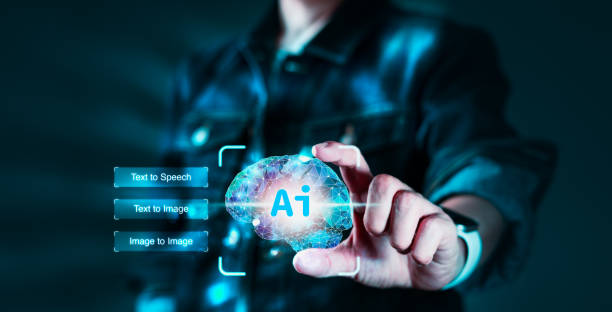
AI Robot Companies and Projects
In the field of AI robots, many companies and projects operate worldwide.
Some of the most important of these companies include Google, Amazon, Microsoft, IBM, and Tesla.
These companies are active in various areas such as developing AI algorithms, building hardware robots, and providing robotic services.
Google, with its DeepMind project, is a leader in developing deep learning algorithms.
Amazon, with its warehouse robots, is a leader in warehouse automation.
Microsoft, with its Azure platform, is a leader in providing cloud services for robots.
IBM, with its Watson system, is a leader in providing AI solutions for various industries.
Tesla, with its self-driving cars, is a leader in developing mobile robots.
In addition to large companies, many research projects are being conducted in universities and research centers worldwide in the field of AI robots.
These projects contribute to the development of new technologies and improve robot performance.
Projects such as RoboCup, DARPA Robotics Challenge, and OpenAI are active in developing AI robots with the aim of solving complex problems and advancing in various fields.
These projects aid in the development and advancement of AI robots.
Many Iranian companies are also active in the development of AI robots and have made significant progress.
These companies are active in producing industrial robots, service robots, and medical robots.
| Company | Area of Activity |
|---|---|
| Deep Learning Algorithms | |
| Amazon | Warehouse Automation |
| Microsoft | Cloud Services for Robots |
| Tesla | Self-Driving Cars |
Required Skills for Working in the Field of AI Robots

Required Skills for Working with AI Robots
Working in the field of AI robots requires diverse skills, including technical knowledge, problem-solving skills, and communication skills.
Required technical knowledge includes programming, mathematics, statistics, artificial intelligence, and robotics.
Programming is essential for developing AI algorithms and controlling robots.
Mathematics and statistics are necessary for understanding and analyzing data and designing complex algorithms.
Artificial intelligence is essential for understanding AI concepts and techniques and designing intelligent systems.
Robotics is necessary for understanding the principles of robot design, construction, and control.
Required problem-solving skills include the ability to analyze complex problems, design creative solutions, and evaluate and improve solutions.
AI robots (Required communication skills) include the ability to communicate effectively with colleagues, the ability to present ideas and solutions clearly and concisely, and the ability to collaborate with multidisciplinary teams.
In addition to these skills, creativity, curiosity, and a passion for learning are also essential for success in this field.
Indeed, working in the field of AI robots is an exciting and opportunity-rich challenge that requires a combination of knowledge, skills, and attitude.
AI robots require sufficient expertise and knowledge to be utilized correctly.
Are you frustrated with your e-commerce website’s low conversion rate? RasaWeb transforms your e-commerce website into a powerful tool for attracting and converting customers!
✅ Significantly increase visitor-to-buyer conversion rates
✅ Unparalleled user experience to boost customer satisfaction and loyalty⚡ Get a free consultation from RasaWeb!
How to Build an AI Robot? Step-by-Step
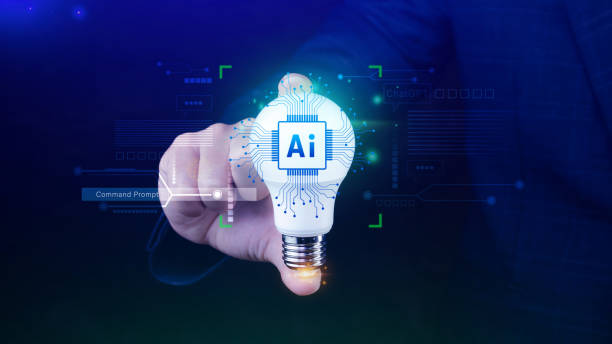
How to Build an AI Robot?
Building an AI robot is a complex process that requires diverse knowledge and skills.
However, by following a step-by-step approach, you can simplify this process.
The first step is to define the goal and problem.
Before starting to build the robot, you must specify what your robot is supposed to do and what problem it will solve.
The second step is data collection.
To train AI algorithms, you need large and high-quality data.
This data can be collected from various sources such as sensors, websites, and databases.
The third step is choosing the AI algorithm.
Depending on the type of problem you want to solve, you must select an appropriate AI algorithm.
Various algorithms exist, such as deep learning, reinforcement learning, and neural networks, each suitable for specific problems.
The fourth step is training the AI algorithm.
Using the collected data, you must train the AI algorithm.
This process involves adjusting the algorithm’s parameters and evaluating its performance.
The fifth step is building the robot’s hardware.
Depending on the type of robot you want to build, you must choose appropriate hardware.
This hardware can include sensors, motors, and controllers.
The sixth step is integrating software and hardware.
After building the hardware and training the AI algorithm, you must integrate the two.
This process involves writing code to control the robot and establish communication between the software and hardware.
The seventh step is testing and evaluating the robot.
After integrating the software and hardware, you must test and evaluate your robot.
This process involves examining the robot’s performance under various conditions and identifying and correcting errors.
AI robots require continuous testing and evaluation to ensure optimal performance.
AI Robots in Iran: Current Status and Future Outlook

AI Robots in Iran
Significant efforts have also been made in Iran in the field of AI robot development.
Numerous universities and research centers are active in this field, and various projects are underway.
Knowledge-based companies are also active in producing industrial, service, and medical robots.
However, the development of AI robots in Iran also faces challenges, including a shortage of financial resources, a lack of specialized personnel, and limitations in accessing advanced technologies.
To overcome these challenges, it is necessary for the government and the private sector to collaborate, make more investments in this field, expand specialized training, and create opportunities for knowledge and technology exchange with leading countries.
The future outlook for AI robots in Iran is very promising.
Given the country’s high potential in human resources and technical knowledge, it is expected that in the near future, Iran will become one of the leading countries in the development and application of AI robots.
AI robots can play a significant role in various industries such as oil and gas, automotive, agriculture, and healthcare, and contribute to the country’s economic and social development.
Furthermore, AI robots can have widespread applications in fields such as education, urban services, and national security.
AI robots can be used as a powerful tool for solving problems and improving the quality of life in Iran.
AI robots require special support and attention to reach their full potential.
Frequently Asked Questions
| Row | Question | Answer |
|---|---|---|
| 1 | What is an AI Robot? | An AI robot is a machine capable of understanding, reasoning, learning, and problem-solving, and can perform complex tasks with relative autonomy. |
| 2 | What are the most important applications of AI robots? | Key applications include industrial manufacturing, customer services (chatbots), medicine and surgery, autonomous transportation, space exploration, and military affairs. |
| 3 | What is the main difference between an AI robot and a regular robot? | A regular robot only follows programmed instructions, whereas an AI robot can learn from data, make decisions, and adapt itself to new environments. |
| 4 | How do AI robots learn? | They learn by identifying patterns and improving their performance through machine learning algorithms (such as deep learning, reinforcement learning) and processing vast amounts of data. |
| 5 | Can AI robots have emotions? | Currently, AI robots do not possess real human-like emotions. They can imitate or recognize emotions, but they do not understand or experience them. |
| 6 | What are the current limitations of AI robots? | Limitations include the need for large amounts of data, inability to grasp abstract concepts, lack of true creativity, ethical issues, and challenges in generalization to new environments. |
| 7 | What is the role of AI in the development of Humanoid robots? | AI helps humanoid robots to walk, maintain balance, perceive their surroundings, interact with humans, and perform complex tasks. |
| 8 | How is the future of AI robots predicted? | It is predicted that AI robots will become smarter, more autonomous, and capable of performing more complex tasks in daily life and industry, and their interaction with humans will increase. |
| 9 | Can AI robots replace all human jobs? | It is unlikely that all human jobs will be replaced. Robots will take over many repetitive and dangerous tasks, but jobs requiring creativity, empathy, and ethical judgment will remain. |
| 10 | What ethical and social challenges arise with the expansion of AI robots? | Challenges include issues related to privacy, data security, ethical decision-making by robots, impact on employment, and accountability in case of errors. |
And other advertising services from RasaWeb Advertising Agency:
- Smart Data Analysis: A creative platform for improving campaign management using real data.
- Smart Reportage: A novel service to increase sales through user experience customization.
- Smart Website Development: A professional solution to increase click-through rates with a focus on smart data analysis.
- Smart Custom Software: Revolutionize online growth by optimizing key pages.
- Smart Marketing Automation: A dedicated service for increasing website traffic based on smart data analysis.
And over hundreds of other services in internet advertising, advertising consultation, and organizational solutions.
Internet Advertising | Advertising Strategy | Advertorials
Resources
What is Artificial Intelligence?
The Future of Artificial Intelligence and Robotics
Applications of Artificial Intelligence in Everyday Life
Guide to Starting Artificial Intelligence Learning
? To reach the peak in the digital world and experience fast and targeted website design, join RasaWeb Afarin Digital Marketing Agency.
📍 Tehran, Mirdamad Street, next to Bank Markazi, Southern Kazeroon Alley, Ramin Alley, No. 6

